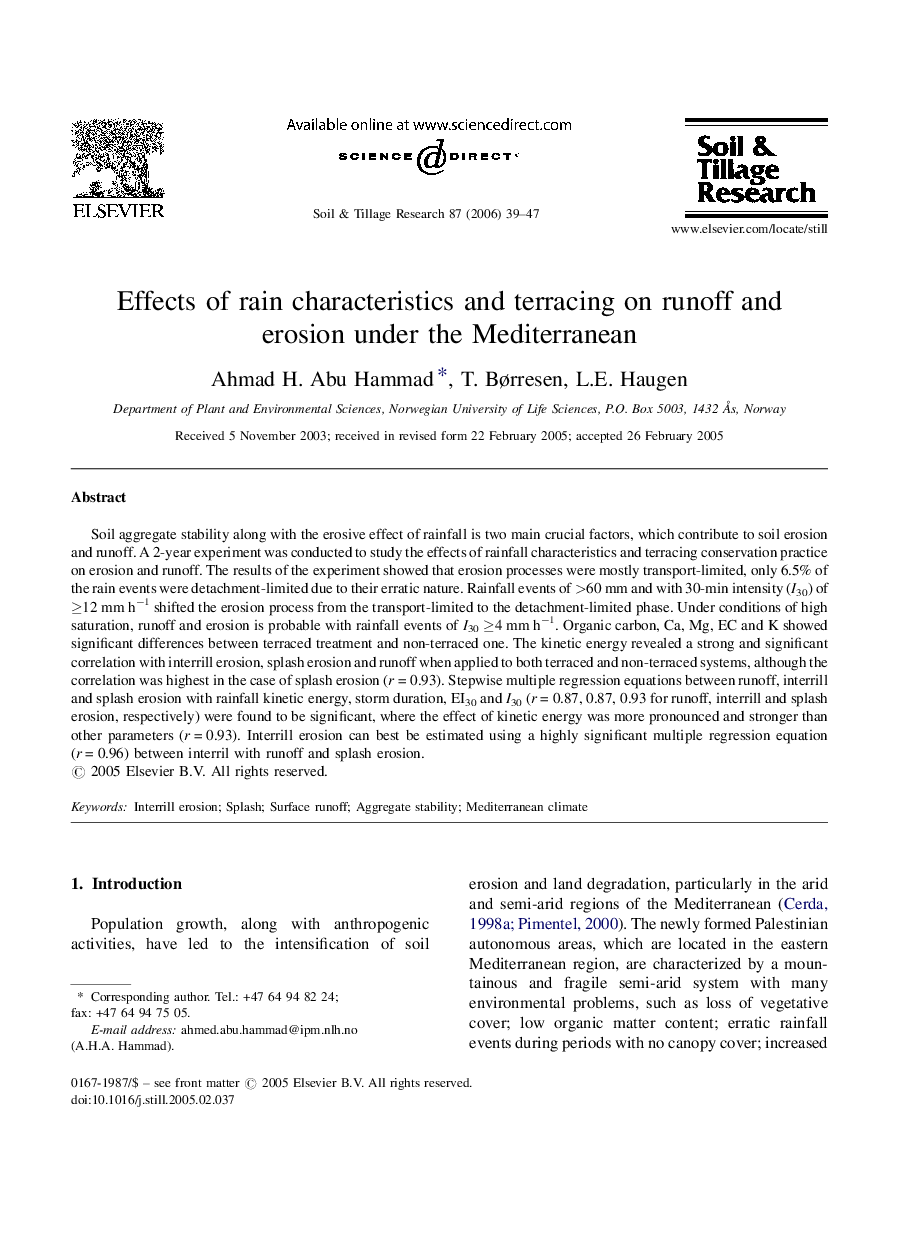| Article ID | Journal | Published Year | Pages | File Type |
|---|---|---|---|---|
| 306871 | Soil and Tillage Research | 2006 | 9 Pages |
Soil aggregate stability along with the erosive effect of rainfall is two main crucial factors, which contribute to soil erosion and runoff. A 2-year experiment was conducted to study the effects of rainfall characteristics and terracing conservation practice on erosion and runoff. The results of the experiment showed that erosion processes were mostly transport-limited, only 6.5% of the rain events were detachment-limited due to their erratic nature. Rainfall events of >60 mm and with 30-min intensity (I30) of ≥12 mm h−1 shifted the erosion process from the transport-limited to the detachment-limited phase. Under conditions of high saturation, runoff and erosion is probable with rainfall events of I30 ≥4 mm h−1. Organic carbon, Ca, Mg, EC and K showed significant differences between terraced treatment and non-terraced one. The kinetic energy revealed a strong and significant correlation with interrill erosion, splash erosion and runoff when applied to both terraced and non-terraced systems, although the correlation was highest in the case of splash erosion (r = 0.93). Stepwise multiple regression equations between runoff, interrill and splash erosion with rainfall kinetic energy, storm duration, EI30 and I30 (r = 0.87, 0.87, 0.93 for runoff, interrill and splash erosion, respectively) were found to be significant, where the effect of kinetic energy was more pronounced and stronger than other parameters (r = 0.93). Interrill erosion can best be estimated using a highly significant multiple regression equation (r = 0.96) between interril with runoff and splash erosion.
